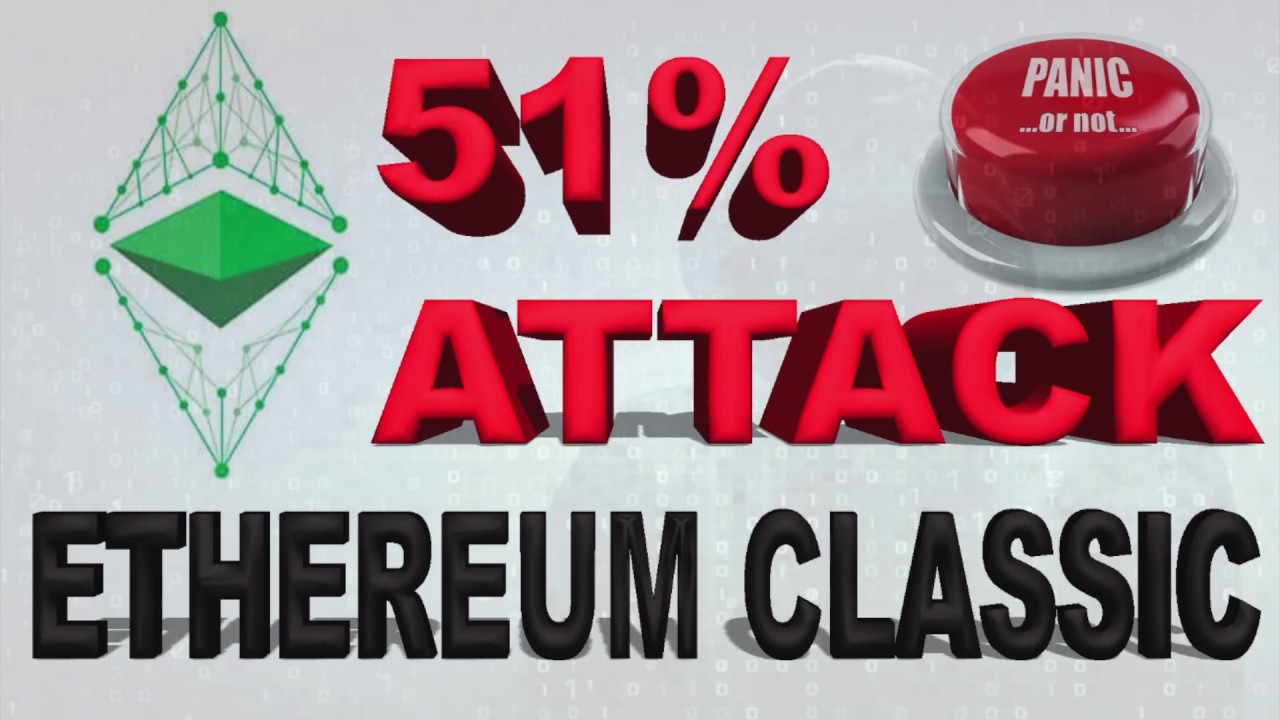Find me on Steemit: www.steemit.com/@heiditravels
Twitter: @blockchainchick
Instagram: @hheidiann
Bit.tube: RealCryptoTips
Check out the new hardware wallet Ellipal HERE: https://order.ellipal.com/?ref=5c08236b8e68e
Thinking about purchasing a Ledger Nano Hardware Wallet? Browse their official website: https://www.ledgerwallet.com/r/67ef
Want to join coinbase to begin your crypto journey? Here’s a link to get free $10: https://www.coinbase.com/join/558828d
LINKS FOR ADDITIONAL READING FOR THIS VIDEO & ALL INFO IN TEXT DOWN BELOW
DAO attack explained: https://www.coindesk.com/understanding-dao-hack-journalists Understanding a Reorganization of a POW Blockchain: https://blog.coinbase.com/ethereum-classic-etc-is-currently-being-51-attacked-33be13ce32de
Cost per hour of 51% attacks: https://www.crypto51.app/?fbclid=IwAR2FOi6dCSasJws4t_9o0c53agPplbcOII4f_taU633r4ZMNdZQlgyQoKkM
Welcome to a new episode, today I want to address what’s been happening with Ethereum Classic and also bring to light what this event means for other cryptocurrency blockchains as well.
For those of you new to this space, or are unfamiliar with the origins of Ethereum Classic, here’s a brief breakdown.
Ethereum launched a DAO (which stands for Decentralized Autonomous Organization) as a way to facilitate decentralized, self-governance, in the Spring of 2016. Shortly after, a hacker took advantage of a bug in this code and was able to steal 3.6 million ether. The community was divided on how to address this problem. The decision was ultimately made to hard fork the code, roll back the blockchain and restore the stolen funds for those who lost lots of coins. Not everyone in the Ethereum community agreed with this decision and a group of devs and nodes continued the original blockchain. That blockchain is what we now call Ethereum Classic. It’s a bit ironic that the “original” chain is the one with the altered name, but that’s to be expected if you go against the Ethereum Foundation and their team.
Ok, getting back to today’s topic. Ethereum Classic has experienced what many are calling a 51% attack. This means that someone or a group of people were able to control the network by having enough computing power to comprise over 50% of the network. In the world of Proof of Work blockchains, the majority rules. In the case of Ethereum Classic in the past two days, they saw a private mining pool gain enough hash power to be able to rewrite their blockchain and double spend Ethereum Classic coins. More than 100 blocks of the Ethereum Classic blockchain have been “reorganized”, which explains how 88,500 ETC were able to be double spent. Ethereum Classic devs aren’t all on the same page with classifying this as a bonfide 51% attack, some believe it to be a “selfish mining attack”.
In reaction to this news, some exchanges have increased the block confirmations for ETC transactions to 400 or more. So you should expect long transaction times for Ethereum Classic for the foreseeable future. Others like Poloniex have disabled ETC wallets altogether for the time being.
The fact that this blockchain was in a position to be vulnerable to an attack like this emphasizes the importance of a large and decentralized network. The larger and more decentralized the network, the more difficult and expensive it is to have enough computing power to overrun it.
There is a company called Nicehash which gives people the ability to rent hash power for a number of different blockchains, for those wanting to mine without actually purchasing a mining rig. They also have a nice and scary tool that shows how much it would cost you to rent enough hash power to perform 51% attacks per hour on different blockchains using their service. By the looks of that web page there are a few other blockchains that aren’t exactly safe from 51% attacks. In regards to these types of attacks, there is room for the argument in favor of Proof of Stake consensus, but before I begin to digress, I’ll leave it to you all down in the comments to voice your opinions on that topic.
















all these rip off are not making people want to enter this space
PoS+PoW will stop 51% attack. To make an attack you not only have to have 51% of hashing power but also 51% of coins ( for staking wight to be moore than 5%). Deeponion for example using PoS+PoW second year and staking % dropped from 10 to 5 %
are you going to sign up for the brave browser so i can tip bat tokens?
the death of proof of work coins.. except for bitcoin 😛
I believe the people of those chains need to invest time and energy to prevent this kind of attack to occur in the first place.
OMG. Top tune.
POW is a trusted setup
This phase of crypto will die – little to no use, major security issues, centralized control, massive founder self enrichment, naive investor pool. I see BTC sub $1000, and new technologies emerging. Future is bright, less 99% of what currently exists.
Really not a big deal at all. $1.1M stolen and the addresses and ID of the hacker are already floating around some [mining] boards. Hashrate of Ethereum Classic is tiny and a 51% attack on larger cryptos is impossible unless you are a billionaire or billion dollar company that can afford that hash power. And even then you’d be stopped within hours. FPGA mining is slowly becoming mainstream anyway so 51% attacks will soon be a thing of the past.
I’m an Ethereum Classic miner and besides the few hour delays over the past few days it’s really not much of an issue.
Litecoin Cash $63 to 51% attack lol somebody should attack these shitcoins just for the lols
Don’t mean to be just blindly pessimistic cause I own crypto myself. But Crypto didn’t seem to make any notable progress in either Accessibility or Simplicity through that entire market bull run or the year after it. While hackers proved at least a dozen ways to steal 100s of millions at a time without getting caught. Even Ledger failed to make a single move for over a year until releasing the “Totally Wireless and Nothing Particularly Safe” model.
People really need to re-calibrate there enthusiasm. Remember the best possible case scenario for crypto is that it replaces Debit/Credit and gives up all mobility and anonymity of cash. While giving either Apple or Google complete control of every device you use to interact with it.
51% attacks will be to 2019 what ICOs were to 2018
Excellent excellent class …and youre beautiful,although you most likely have pimples on your behind.
Scammer Craig Wright tried it with BCH and failed because the network has deep support from deep pockets that deployed extra hash to crush the attack and cost the attacker millions!
That really stinks. Thanks for the info Heidi.
Daaaaamn! Good look. Thanks for showing the "51% attack purchasing page". Unreal. Salute
Thanks for the quick explanation , I sold all my ETC at a serious loss .
That is too bad with ETH Classic, one of the first alt cryptos i invested in. Thought they were a great project. in fact they were a good project. Was supposed to be something really good and could have moved things forward in the space. Well at this moment. I just sit on it. I did put some $ into it as well. I admit FIAT lol, but what can you do. All well. Looks like its gold fish and floor tiles for dinner next while. Thanks for sharing. Sincerely JR
Wow, that chart is pretty scary. Not sure POW is even secure. My rich uncle could probably 51% attack bitcoin.
shitcoins are called shitcoins for a reason, there was no reason whatsoever to Fork ETH, Chinese scam…
I think LCC is going through the same thing as I watch this. This is what my wallet says:
Warning: Unknown block versions being mined! It's possible unknown rules are in effect